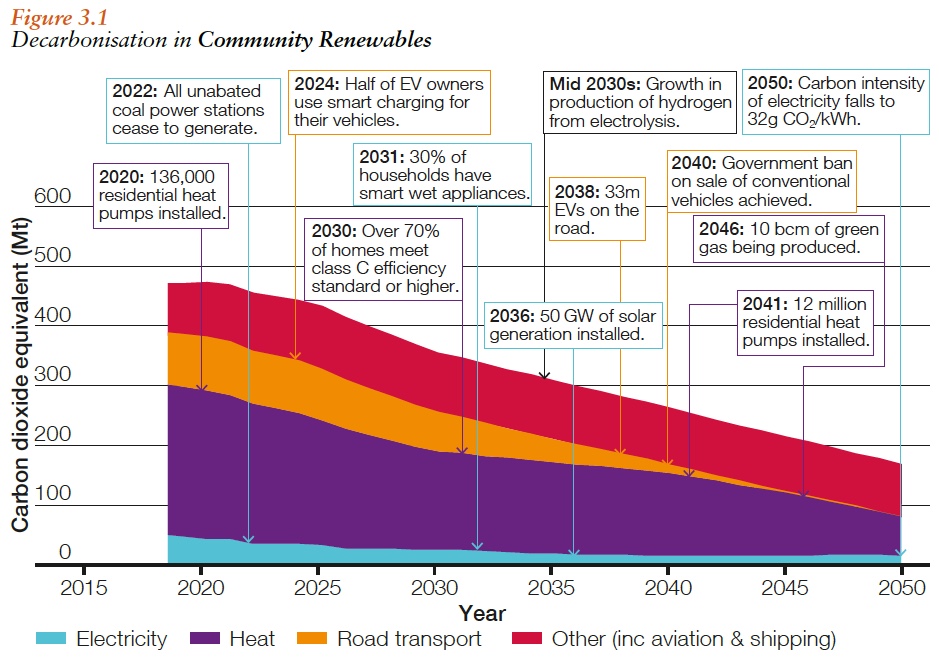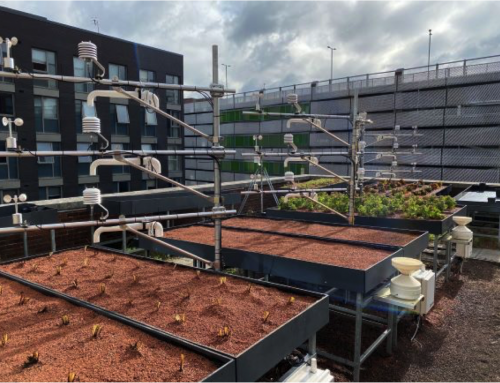In this article we’ll explain how electrical and thermal energy storage systems may be used in the residential built environment – one of the many uses for the data obtained from Urban Flows’ sensors. We’ll also suggest some of the ways in which the monitored substation power flow and solar irradiance data might facilitate studies into the value of such energy storage.
Potential Uses of Energy Storage
- Integration of photovoltaic (PV) generators into local and national power networks
Photovoltaic (solar) panels convert light into electrical energy. Rooftop solar panels are commonly encountered in the built environment, where the panels typically act as a source of electricity for the building on which they are mounted. Concentrated pockets of rooftop PV generators can cause the local power distribution networks to experience thermal constraints or overvoltage constraints. The former is a when a relatively large amount of power is generated that overloads the local power lines, the latter when grid voltages exceed the permitted limit of 253V, due to export of generated power onto the grid. New energy trading paradigms such as peer to peer trading (P2P) could result in a rapid and significant uptake of rooftop PV generators, therefore causing regular strain on power networks without a solution.
Battery energy storage systems (BESSs) can reduce line voltage and thermal congestion by absorbing power that would have otherwise been transmitted across the distribution cables. Our research clearly shows that when used as the sole management technology, BESSs are not usually the most economically or environmentally effective way to manage distribution constraints. However this technology could absolutely be used to increase the maximum possible rooftop PV penetration on the national grid to more than 10GW – a limit beyond which it would experience difficulties. This would also indirectly provide a degree of local power network support in the process.
We cannot quantify what this benefit would be without an understanding of power demand in the urban environment, which must come first from monitoring.
- Electrified Heating and Energy Storage
The contribution of renewables to the electricity grid is continually increasing. Switching from gas fired boilers to electricity powered air source heat pumps (ASHPs) in homes is becoming a viable strategy for decarbonisation. Unfortunately ASHPs become less efficient in cold situations and thus demand relatively high levels of electrical power to operate. Most research suggests that at high enough ownership levels, demand increase will be large enough to overload power lines and substations, or result in undervoltage constraints, where voltage at the street level falls below the lower limit of 217V.
One strategy for network stress management may be to decouple heat demand and heat generation using thermal storage – usually in the form of a hot water tank connected directly to the central heating. For example, a 200 litre hot water tank heated to 55oC by an ASHP can store around 10-12 kWh of useful heat. This is about 30-40% of a residence’s daily space heating demand, and the entire domestic hot water demand (for dishwashing, showering, etc.). The tank could be charged overnight when there is little electricity demand and used in the early morning and evening, at times when additional heating demand may stress the power network.
This could prove a promising strategy for total/partial management of power network constraints, though the effectiveness of different storage strategies across urban networks are not yet well understood. Without a proper understanding of the present electricity demands (i.e. the demand without ASHPs), within the residential areas of Sheffield, it is difficult to confidently perform a study which adds ASHP demand to this. We must therefore monitor power demand to ensure our base data is reliable.

The image shows the effect of network changes on decarbonisation, and the likely timescales upon which these will be achieved. Source: Future Energy Scenarios, National Grid, July 2018 – p.28
Benefits of Energy Monitoring
Validation
Most network studies require large amounts of electricity consumption data to run – often electrical demand data for each individual residence is required. It is not currently feasible to monitor electricity consumption from minute to minute at every house in a city (such minute to minute data is known as a ‘demand time series’), and therefore researchers have to simulate this. Assuming simulation results match reality is bad practice, so we must compare the simulations to real observations in some way. This process is known as validation, but the attainment of real world data to validate simulations against is often a very challenging process. Even if this data can be obtained, perfect and undebatable validation is often impossible, so researchers develop common practices/compromises.
One such compromise is simply to sum together a number of simulated demand time series’ equal to the number of houses served by a given substation, and compare these to actual recorded power flow information at the substation. Therefore, by monitoring actual substation power flows, we can ensure that our simulations are producing something reasonable. For example, if the substations that serve houses in a given area are most heavily loaded between 18:00 and 22:00, and nearly inactive between 00:00 and 05:00, then the sum of all demand time series data must reflect this.
Realism & Simplification
It is often the case that monitored data allows us to avoid complex and questionable alternative means of input data synthesis.
Let’s assume we wish to simulate a 1km2 area of the power distribution in a residential suburb of Sheffield at 1 minute intervals. As an example, we want to see what effect a 40% rooftop PV ownership scenario may have on network functioning. In this case it wouldn’t be appropriate to use the same solar data for the entire area because cloud coverage patterns can vary significantly at small time steps over large areas.
A possible solution to this could be to program or modify a piece of software that simulates cloud coverage and motion, such that it could estimate the actual solar irradiance at any point in the 1km2 area. This may produce an acceptable dataset in some circumstances, but it is much easier to use data from real sensors, as the dataset resulting from these is unquestionable (provided the sensors are correctly configured). Furthermore, real, monitored substations voltages provide an additional degree of accuracy – power flow studies at low voltage often assume a fixed voltage at the substation, which is not the case in reality.
The Active Building Centre funding awarded to the RISE group is a huge asset to the continuing work of the Urban Flows Observatory. Being able to present proposals and solutions from actual data obtained from sensors, rather than simulations, is an important driver in encouraging real change in the field of energy storage.
Author: Richard Johnson, Research Associate in Power Networks and Active Building Scaling, Sheffield Urban Flows Observatory & Active Buildings Centre






